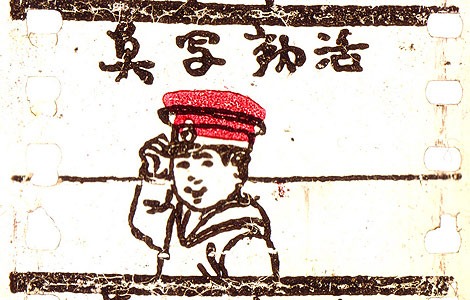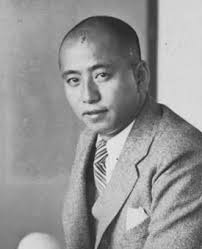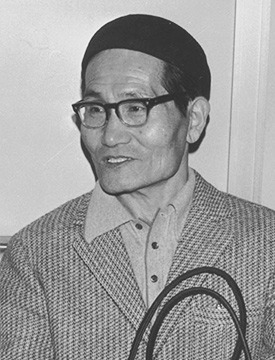The Beginning (1900s - 1940s)
Anime has been around since the 20th century; it is even believed that the first animated film produced in Japan was created in 1907. “In December 2004, the researcher Matsumoto Natsuki stumbled across an antique box of movie paraphernalia in Japan’s ancient capital of Kyoto. Among the camera parts, film canisters and other bits of junk, Matsumoto retrieved a small strip of 35mm film, comprising a mere fifty frames – just enough footage to splice into a loop” (Clements 20). The footage, named the Matsumoto Fragment, featured hand-drawn pictures of a boy writing words on a chalkboard and taking a bow. The footage is only 3 seconds long, but since it was believed to be created in 1907 (some speculate that it might be even older than that), it is claimed that this film might have been the first animated film ever. Which implies that animated films might have originated in Japan, meaning anime is the reason animated films became what they are today. However, since the film can’t be officially dated, this is all just speculation, but it does start up the conversation on the history of anime. Anime history is important to learn because in Japan, “anime is much more than a subcultural text: it is a media empire that takes the form of a complex system of industrially and culturally understood genres and audiences that crosses back and forth between everyday culture and extreme forms of fandom” (Cardullo 91). Even in a time of great tragedy and war, Japanese culture still found ways to make anime for their people.
Besides the Matsumoto Fragment, all animated films found in Japan cannot be dated before 1917. There were some little animation shorts found, but there were no records of a public viewing of those shorts. So, just like the Matsumoto Fragment, the actual date of those films is up to speculation. It also did not help that animation in Japan was “costlier and more time-consuming” than working with live action, which is probably why animation took longer to get public viewings (Clements 23). It wasn’t until February 1917 when the first anime was officially released. Dekobō Shingachō: Meian no Shippai was the first commercially animated film in Japan, the film was a short, simple story of a samurai being cheated by a merchant. The film was just a fun, little short that was barely even a minute, but it did the job of entertaining people and got more people invested in animated films. After this film, there were several other films that came out, but there were no records on when exactly they came out or what they were even called. Although these films were never shown outside of Japan, they did end up kick starting the industry and got the anime industry moving. However, the anime industry had to take a break after a natural disaster hit Japan.

In 1923, the Great Kantō earthquake devastated Tokyo and Yokohama, which ended up putting the film industry on hold while they focused their time on rebuilding. The anime industry didn’t get back in gear until 1933, when they released their first “talkie” anime. Chikara to Onna no Yo no Naka, by Kenzo Masaoka, made history by being the first anime to incorporate sound, which led to more story being told by having actual dialogue. Masaoka also made history by created the first anime made up entirely of cel animation in 1934, the film was called Chagama Ondo. Cel animation is the “production of an image composed of multiple planes. These planes may be composited in various ways to assure that the image holds together under conditions of movement” (Lamerre, The Anime Ecology 214). Cel animation was not extremely common until later into the 1930s, Masaoka essentially paved the way for a faster way to make animated films. Masaoka, and other animators during this time, push themselves to make anime more engaging and look smoother, even after times of crisis. However, as the 1930s came to a close, Japan initiated a Film Law in April of 1939. The Japanese government initiated the film law so they would have more control of films and make sure films show Japanese nationalism. This law made animators have to come up with different kinds of stories that would follow the new film law.

Since WWII just started when the Japanese government initiated the Film Law, most animated films from this time were used for war time propaganda. The only short film that wasn’t used as Japanese propaganda was the film, Ari-chan. Ari-chan, created by Mitsuyo Seo, was the first film in Japanese history to use a multiplane camera for the whole film. With the multiplane camera “it allows animators to shift the viewing position of the camera shot by shot while adjusting the distances between celluloid sheets in such a way that everything remains in the scalar proportions,” which opens creates a new set of movement for animated films (Lamarre, The Anime Machine 30). Multiplane cameras were used often in Disney films at the time, Seo and his coworker, Tadahito Mochinaga, tried to replicate Disney’s techniques with the multiplane camera in Ari-chan. Using the multiplane camera techniques, Japanese animation was able to compete with Disney films and made their animation more appealing to people overseas since it was a familiar movie technique. Seo didn’t stop there with the multiplane camera, he used it for his next two films. His next two films were the biggest Japanese propaganda to come out of WWII. The first film came out on March 25, 1943, and it was called Momotarō no Umiwashi (Momotaro’s Sea Eagles). The film was produced with the help of the Japanese navy and was aimed towards children when it was being made. The movie itself was based on a Japanese folklore and uses cute animal characters to show the Japanese navy were the good guys fighting off the evil of the world. The film did so well, Seo was able to create a sequel to the film. The sequel was called Momotarō: Umi no Shinpei (Momotaro’s Divine Sea Warriors) and it came out on April 12, 1945. The film more successful than the first film, with its better animation, better story plot, and its stronger propaganda message than compared to the first film. It was also the first feature-length anime movie to be publicly shown, running for 74 minutes while the prequel only ran for 37 minutes.
Work Cited
Anime, -Written by: Right Stuf. “US History Of Anime: A Right Stuf Perspective.” Right Stuf,
www.rightstufanime.com/post/global-history-of-anime
Cardullo P. Anime: a critical introduction by Rayna Denison. Visual studies (Abingdon, England). 2017;32(1):90-91. doi:10.1080/1472586X.2016.1271053.
Clements J. Anime: a History. Palgrave Macmillan on behalf of the British Film Institute; 2013.
Lamarre, Thomas. The Anime Ecology: A Genealogy of Television, Animation, and Game Media. University of Minnesota Press, 2018.
Lamarre, Thomas. The Anime Machine: A Media Theory of Animation. University of Minnesota Press, 2009.
Yasuo, Yamaguchi. “The Evolution of the Japanese Anime Industry.” Nippon.com, 30 May 2020.

After the war, anime was placed on the back burner, yet again, to help recover all Japan has lost. During this time, anime pretty much stayed in a bubble surrounding Japan, so the rest of the world didn’t get the chance to see any of anime’s early work until decades later. However, after Japan recovered from WWII, the anime industry took off and was determined to share its work to the rest of the world. Even though anime did not have a huge start, it’s still amazing to see how far it has come from 3 second fragments. A 3 second fragment led to many animators creating new animated projects to bring joy to their country, in a time when there seemed to be no joy at all.
0 Comments Add a Comment?